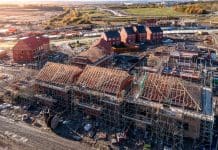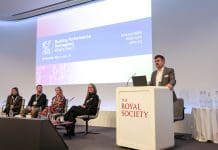A digital estates strategy can ensure accurate, trusted data is available to both maintain and develop for the future. Mark Stodgell of PCSG explains how
Quickly locating trusted information about built assets is an essential part of everyday work for modern day owner/managers and FM teams, but particularly so for those with large estates.
However, challenges including outdated systems for recording and storing information, duplicate sources and question marks over accuracy and reliability mean that all too often the process of locating fit-for-purpose data is dysfunctional.
In many years of working across a wide spectrum of the built environment, I have seen at first-hand the daily struggles that estates teams face with finding information to make decisions or simply to do their day job.
All too frequently, the fastest way to unearth accurate information is to ask others, normally the last designer to work on a building, or even commission a reactive survey.
Consequently, an answer that should be unearthed in minutes can take hours or even days. Coupled with the significant waste of time, cost and risk is the potential restriction to explore new opportunities.
The ‘why’ for this situation, I feel, is buried in the rise of the PC, digital filing and the demise of the admin team. Other factors include the reliance on self-filing rather than a dedicated individual or team to curate documents and drawings over long periods of time.
How digitisation should solve not create the problem
Today, though, organisations are seeking to resolve these inefficiencies and take a new, smarter approach by embarking on an estates digitisation journey. As the built environment sector has awoken to the techniques of Building Information Modelling (BIM) and digitalised engineering, it is seeking to leverage efficiencies in all areas and at all stages of the asset lifecycle – including in the management of information about their properties.
Properly structured estates digitisation, based on common standards such as the 1192 suite, provides a step-change in the management of existing information and procurement of new data about assets. It is about enabling major asset and estate owners, operators and managers to maximise efficiencies, reduce risk and ensure that they are equipped with accurate, trusted data that will allow them to provide robust evidence to underpin important decisions.
The journey is not straightforward and may encompass the adoption and utilisation of BIM, information audits, procurement and reviews of existing technology, information specifications, process reviews, standards and, of course, people and change challenges.
A critical factor that any organisation must include in this journey is security: ensuring data is secure and available to the right people.
But at its heart, digitisation of estates is about enabling an organisation to answer quickly and accurately its Plain Language Questions:
• Have we got any…?
• How many…?
• Where are…?
• When is the…?
• Is there…?
The benefits of implementing this change – whether for statutory compliance, monitoring or decision making – are many: the cost and time savings; the removal of duplication; and the invaluable ability of having at your fingertips reliable, trustworthy and accurate data.
Summed up simply, being able to ‘find your stuff’ quickly saves money and reduces risk.
PCSG Digital Estates symposium
At a recent Digital Estates symposium, PCSG gathered together existing clients to explore this theme. It quickly became apparent that all faced the same battles:
• Multiple systems and sources (still including paper and CDs).
• Department silos producing duplication of storage and version control issues.
• Consistency.
• Completeness.
• Accuracy: Is it up to date? Were the ‘as-builts’ even correct in the first place?
All present agreed on the difficulties in locating fit-for-purpose information and the time spent in searching for it, the question marks over the quality of existing data, figuring out how to link information contained in a variety of different systems, and the challenges in effectively sharing it securely.
Equally important was buy-in for the process from board level and help not only with the technical processes but also the cultural shift required.
A key concern addressed at the event was security – not just the issue of sophisticated cyber-attacks but a general security-minded approach. How do we know who has access to our information?
At our symposium, many questioned whether ‘BIM’ was a useful description in the context of what they were setting out to achieve. Some felt ‘digitisation’ provided a more accurate description of the journey.
Conclusion
As the benefits of a Digital Built Britain become ever clearer, more asset owners are recognising that the adoption of a structured approach to their estates and asset data is no longer an option but a necessity. Data is today one of the most valuable commodities and the adoption of a digitised strategy is not just about the ‘now’ – it is also about being resilient and well-positioned to meet head-on the challenges teams may face in the future.
Mark Stodgell
Associate Director
PCSG
Tel: +44 (0)208 680 4120
Twitter: @PCSG_World














